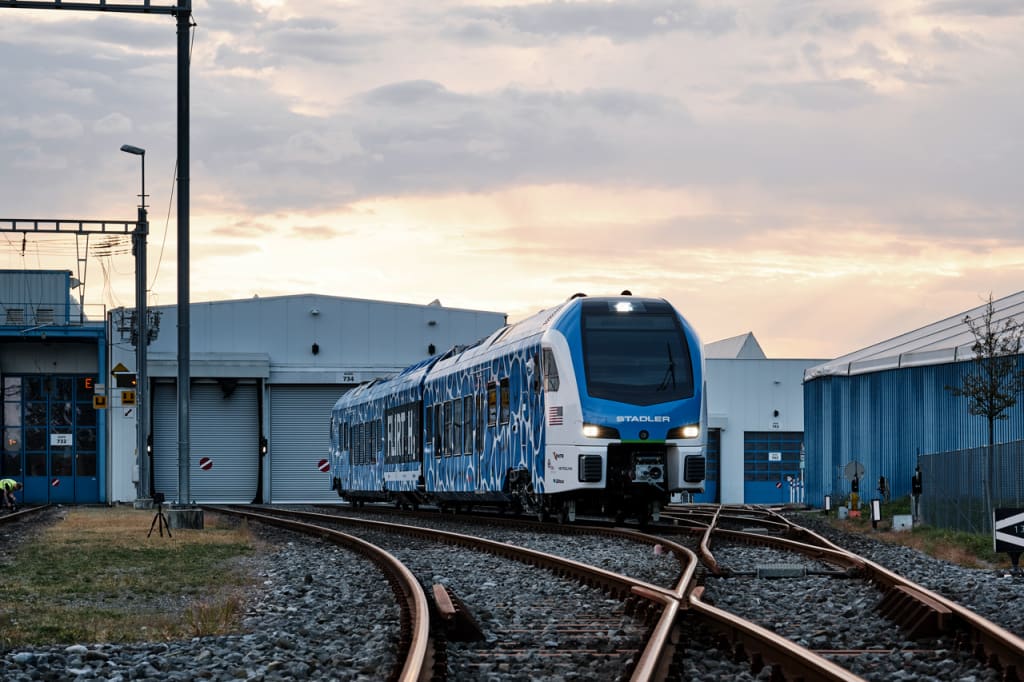On a cold day, a new train puffs out clouds that look like smoke, just like a traditional steam engine. But the train—which runs on hydrogen fuel cells, not coal—doesn’t create any climate emissions or air pollution. The only exhaust is water vapor.
The sleek blue train is the first of its kind in North America. Called a ZEMU, (zero-emissions multiple unit), it will soon begin carrying passengers between two cities east of Los Angeles, connecting commuters to other trains that travel to downtown L.A.
Clik here to view.

Some other train lines are eliminating emissions by adding overhead wires and using electric trains, like Caltrain’s new project in the Bay Area. But hydrogen trains don’t require any changes to tracks. “The reality is it can be used anywhere existing rail happens now,” says Tim Watkins, chief of legislative and public affairs at the San Bernardino County Transit Authority, the agency behind the project. “It doesn’t require a new capital investment into infrastructure.”
The trains, designed by the Swiss manufacturer Stadler, use a hybrid hydrogen-battery system. Hydrogen fuel cells split apart hydrogen molecules, generating energy that charges onboard batteries, which then power the train’s motors. The batteries also recharge when the train brakes. “It’s great for us to be able to recuperate that energy so we can make the efficiency of the train even higher, and the range better,” says Kaden Killpack, a commercial project manager at Stadler U.S.
Clik here to view.

The train is currently running through its final testing on local tracks. Metrolink, a regional train system, will begin regular service between the cities of Redlands and San Bernardino in early 2025. The train, with three passenger cars, is designed to be refueled once a day. At first, the system will use regular hydrogen, which is made from fossil fuels—so even though direct pollution from the train will be eliminated, it will still have a carbon footprint. Green hydrogen, made with renewable energy, “has a resource issue here in Southern California,” says Watkins. “But we’ll migrate to green as the resource becomes more available.”
Clik here to view.

The fact that the train eliminates pollution is especially critical in San Bernardino. The area’s 10-lane freeways, rail yards, and other industry all contribute to bad air quality. The American Lung Association gave the county an “F” grade in its 2024 State of the Air report. The county ranks worst in the nation for smog, with nearly six months a year of unhealthy air days during the study period from 2020 to 2022. (Wildfires, like the current Line Fire, are another growing source of air pollution in the area. Cutting emissions can help avoid some of the worst effects of climate change, including even more fires.)
The project, backed by millions in funding from the state, will demonstrate a system that could be replicated elsewhere. Electric trains with overhead wires still make sense when possible, Killpack says, because they’re efficient and don’t have to refuel. The trains themselves are simpler, so there are fewer parts that can break. But in areas where it’s hard to add overhead wires—either because a city doesn’t like the look of them, or because freight companies that share the track resist it—hydrogen is another option. “I think it’s going to enable a lot of places to decarbonize without having to make extremely expensive investments in infrastructure,” he says.
